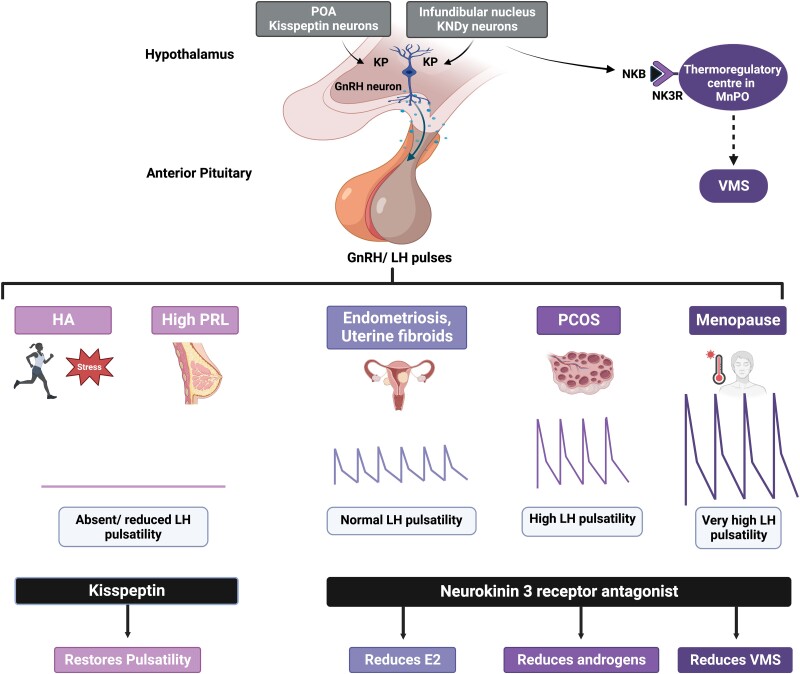Figure 5.
Therapeutic potential of KP and NKB in female reproductive disorders. Activation of hypothalamic KP neurons directly stimulates GnRH release and regulates reproductive hormone secretion. Absent or reduced GnRH and LH pulses observed in HA and hyperprolactinemia can be restored using exogenous KP. While GnRH/ LH pulsatility is retained in patients with endometriosis/uterine fibroids, patients with PCOS have high pulsatility. During the menopause, increased KNDy neuronal activity results in very high GnRH/LH pulses and induction of vasomotor symptoms through dysregulation of the thermoregulatory center. Considering NKB antagonism partially suppresses (but does not abolish) the reproductive endocrine axis, NK3R antagonists have been developed for the therapeutic potential of these disorders. NK3R antagonism can be used to treat endometriosis/ uterine fibroids (by reducing E2), PCOS (by reducing androgens), and menopausal hot flashes (by reducing vasomotor symptoms). E2, estradiol; GnRH, gonadotropin-releasing hormone; HA, hypothalamic amenorrhea; KP, kisspeptin; LH, luteinizing hormone; NK3R, neurokinin 3 receptor; NKB, neurokinin B; PCOS, polycystic ovary syndrome; KNDy, kisspeptin-neurokinin B-dynorphin. Figure created with BioRender.com.

